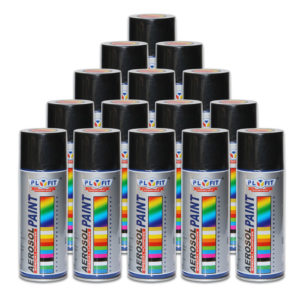All About Moths And Best Ways To Get Rid Of Them
Moths are particularly mysterious creatures. Soft and fuzzy looking, often associated with night time (even though they are just as frequently out during the day), it can be hard to believe they can do so much damage until you have seen it first hand.
But the first time you pull out what used to be your favorite sweater and see frayed holes where seamless style used to be, you too will be chomping at the bit to find the best anti-moth remedy.
In this article, learn more about moths and the best ways available to get rid of them once and for all.
Moths Amongst Us: A Brief Overview
Contrary to popular belief, moths aren’t actually the “dark cousins” to butterflies. They don’t live in your cupboards just to wait for that perfect moment to fly out and freak you out.
Some moths are quite colorful, and can vary in size from less than an inch to six inches or bigger. With 160,000 species cataloged to date, there is still much scientists and pest control experts are learning about moths as a species.
The good news is, apparently moths are delicious. Birds, bats, rodents and reptiles all enjoy moths in their caterpillar or adult winged form. In fact, for many bird and bat species, moths are a critical food source during rearing of young.
And while you probably won’t enjoy hearing this, in many countries (Africa in particular), caterpillars and moths make good eating for people too. Apparently they are full of protein and nutrients as well as vital minerals like potassium, zinc and calcium.
The Moth Lifecycle
Moths have a lifecycle quite similar to other winged insects. The main difference is, other insects aren’t quite so keen to reproduce in your pantry.
Here is a basic timeline for the moth lifecycle:
– Female moths will mate and lay up to 400 tiny eggs at a time, ideally near a source of food.
– The eggs will incubate for up to eight days and then hatch.
– The tiny emerging larvae then begin to eat whatever they find (flour, cereal and animal-based fabrics are particular favorites depending on the species).
– After about 14 days of continuous eating, the now-larger larvae spin tiny cocoons for themselves in dark corners or even inside food containers or clothing.
– Two weeks later, the adult moths hatch.
– At this point, the cycle begins all over again, and can happen up to six times in the average year.
With this rate of rapid maturation and reproduction, if you have ever felt like your home is literally infested with moths, chances are good it actually is. This is also why learning how to get rid of moths for good is a necessity, since they certainly won’t leave on their own!
Make Your Space Permanently Moth-Averse
Many people who consult professional pest experts are leery of odorous and possibly toxic remedies like mothballs. After all, what good is a moth-free wool suit if it smells too awful to wear it?
Luckily, today’s modern pest control experts know exactly how to get rid of moths for good. But typically, the use of chemical helps such as fumigation or traps is used only after these basic strategies have not yielded the desired results.
There are two kinds of moths: moths that like food and moths that like fabric. The food moths will live in your pantry and the fabric moths will hide in your closet.
So the first step is to figure out what type of moths you have. This is usually easy to do just by noticing where you see moths regularly inside your space. Once you’ve figured out what your moths like to eat, it is time to clean house, literally.
Pantry strategies.
– Clear out your pantry until only bare shelves and flooring remains.
– Throw out any food items that show signs of infestation.
– Thoroughly clean the bare pantry, paying particular attention to crevices where moths may be cocooned.
– Use brooms and vacuum suction to clear out hard-to-reach corners.
– Sanitize with your preferred cleaning products.
– Store remaining food items inside insect-proof containers.
Closet strategies.
– Clear out your closet until only the rack and flooring remains.
– Examine all clothing for signs of damage.
– Wash or dry clean all items in water at least 120°F (48.88°C).
– Make sure all items get washed or dry cleaned, even those made of plant fibers, since pupae may cocoon inside them and hatch to re-infest your clothing.
– Vacuum and sweep to ensure even cracks and corners are clear of cocoons.
– Sanitize with your preferred cleaning products.
– Before adding any new item to your closet (especially vintage or resale items) always wash or dry clean it first.
Repeat these steps as needed or at least once annually to ensure moths do not return.
Professional Pest Control to the Rescue!
Moths can be remarkably persistent. They can also be very hard to spot in larvae or pupae form, meaning your best efforts may fail to completely eradicate them from your space.
But even the most tenacious moths are no match for today’s pest control pros.
These treatment options can be used alone or together to rid your space of moths for good:
– Pheromone traps. These traps lure moths who think they are meeting a mate.
– Fumigation. Gas penetrates anywhere larvae or pupae are located, also killing adult moths as it works.
– Insect growth regulators. These products interrupt the moth life cycle to ensure no immature moth is able to reach maturity and reproduce.
Once your home has been treated, you will want to regularly follow the basic cleaning steps outlined here (see earlier section) for the type of moth (food or fabric). Also be sure to contact your pest control expert if the moths attempt a comeback!
Non Toxic Spray

This non-toxic spray kills larvae, eggs, and adult insects by breaking down their exoskeleton. It is safe to spray around the home and works only on the insects. Feel good about spraying indoors around pets, plants and children.
All Natural Non Toxic Insect Killer Spray by Killer Green
